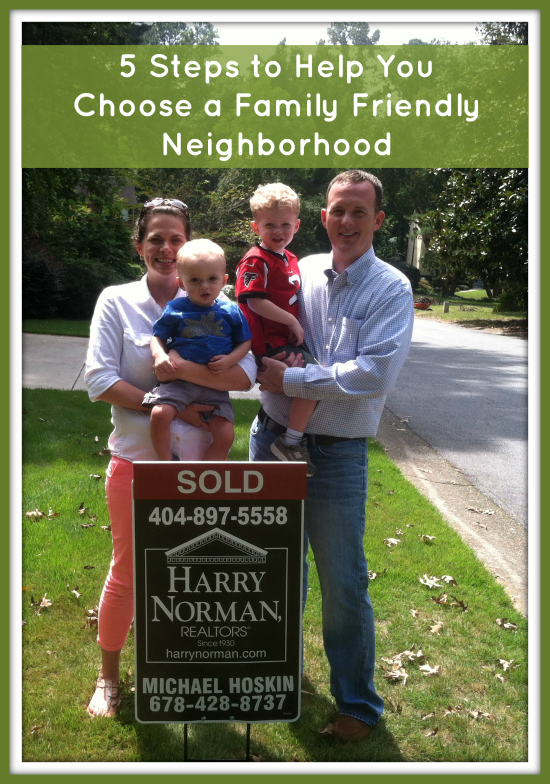5 Steps to Choose a Family-Friendly Neighborhood
By Tali Wee
Home buyers spend a long time combing through real estate listings in search of a potential new home; but how much time is spent looking at the neighborhood? Moving into a new home may mean adapting to the lifestyle of those in the neighborhood, and while a house might seem idyllic, a closer look at its surroundings can reveal features not suited to a family.
The community, amenities, schools and a host of other factors all determine a good-fitting neighborhood. Therefore, it’s important for a family to agree on their neighborhood “must haves” prior to purchasing a home.
Looking for a new home can be made easy by using some neighborhood detective skills. Follow these five steps before signing a contract and making the move to a new neighborhood.
Review School Districts
It’s common for families to start their home searches based primarily on the school districts they prefer. A great way to compare school ratings and reviews is by using information provided by GreatSchools. In addition to school performance, school proximity is beneficial for families with and without school-aged children. Living close to quality schools provides families with convenient morning and afternoon commutes and being located in a highly sought after area can raise a property’s value.
Locate Parks & Amenities
Local parks and playgrounds are great places for children and parents to meet and make friends outside of their school networks. Check to see if the neighborhood has any community associations, sporting groups or clubs that interest family members. Being close to amenities such grocery stores, coffee shops, restaurants and major shopping centers also provide convenience for busy families.
Check the Walkability
The walkability of a neighborhood is a major deciding factor when figuring out which home to purchase. Walkability in safe neighborhoods is desirable for families of all sizes. It saves homeowners time and money to be able to walk to local stores, work or public transportation. Parents can relax, allowing their kids to walk home from school in safe and walkable neighborhoods. Walkability is also important to families who want to reduce their carbon footprints or manage multiple schedules with one vehicle. Before deciding on a neighborhood, check out Walk Score information; it’s as easy as typing in the potential home’s address.
Consider the Commute
It’s important to consider the amount of commuting required in a particular neighborhood. Consider factors such as school locations, work, amenities, form of transportation as well as the amount of traffic throughout peak commute times. The national average commute time is 26 minutes; less time commuting means less stress and more time to spend with the family. Information on commute times can be found easily via Google Transit.
Visit In-Person
First impressions persist. By visiting the neighborhood during the day and night families get a better idea of the area’s overall character. Checking out the neighborhood throughout the day gives buyers insight into the look and feel of the neighborhood and its residents, while giving them a chance to check out the curb appeal of the homes. Visiting after dark provides a new perspective about the safety of the neighborhood, the presence of street lights, proximity to bars, restaurants and loud nightlife areas not suitable for families.
To help make the search easier, enlist the help of a real estate professional who specializes in working with families to help find a suitable family-friendly neighborhood.
This guest post was written by my friends over at Zillow. Their website and app were so helpful to us when we were searching for our first home last year. I used their app when driving though neighborhoods to see what homes were for sale nearby and it was also so helpful to have the expertise of our amazing realtor, Michael Hoskin, to help us navigate the entire process!

